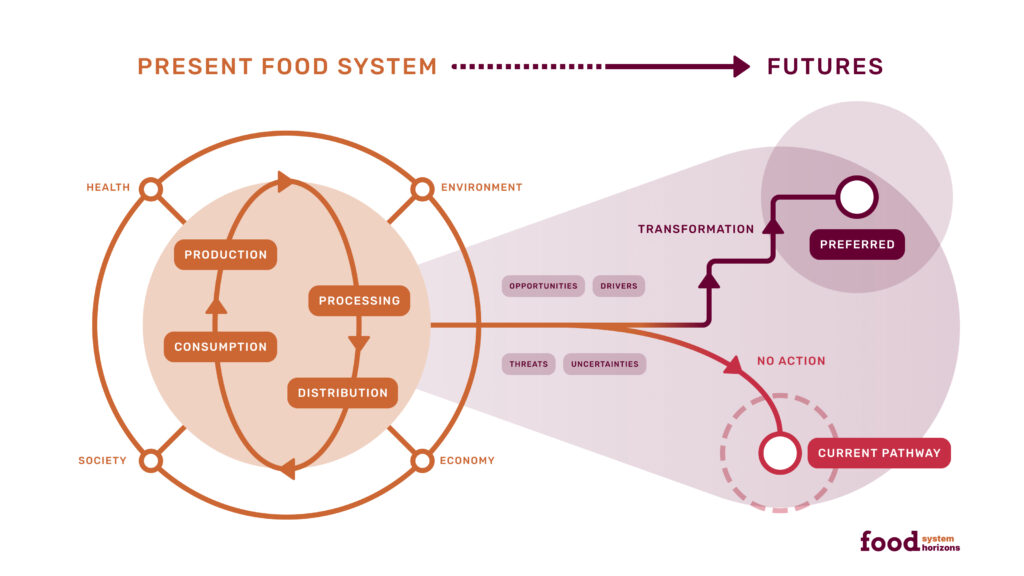Why take a systems perspective
Tackling sustainability and social challenges
Taking a systems perspective helps us understand and manage the sustainability and social challenges affecting the systems we use to produce and distribute food.
What is a systems perspective?
The left side of the food system futures figure is a simplified representation of the present food system, comprising four components of the food system that include production, processing, distribution, and consumption. The components sit within a circle that indicates that these impact each other. The food system produces outcomes for individual health, the environment, the economy, and society. These outcomes are shown in a concentric circle around the food system components, indicating their interrelationship with the components and their impact on each other.
In the middle of the food system futures figure, there is a single pathway emerging from the present food system towards food system futures. This pathway is impacted by opportunities, drivers, threats, and uncertainties. Towards the right side of the figure, this pathway diverges to two different pathways. One pathway labelled the current pathway indicates no action is taken and continues downward to the bottom of the figure. The second pathway labelled preferred goes upwards in steps, which are labelled transformation, indicating that we can have a preferred food system future through transformation. All of the pathways occur within a cone of colour, which indicates that there are many different pathways, and thus many different food system futures.
Projecting food systems into the future. Citation: Food System Horizons 2024.
Taking a systems perspective means understanding interactions between components of the food system from natural resources and agriculture, to food processing and distribution and through to nutrition and human health. A systems perspective is especially helpful for addressing challenges occurring from interactions between system components that cannot be adequately addressed by focusing on the individual components of the system.
Taking a systems perspective also helps us think about what we want future food systems to be. Food systems are dynamic because they are responsive to diverse drivers of change. A systems perspective helps us understand the interactions between system components that result from multiple pressures for change, so that we can develop the types of transformative action required to work towards preferred futures (see Figure).

